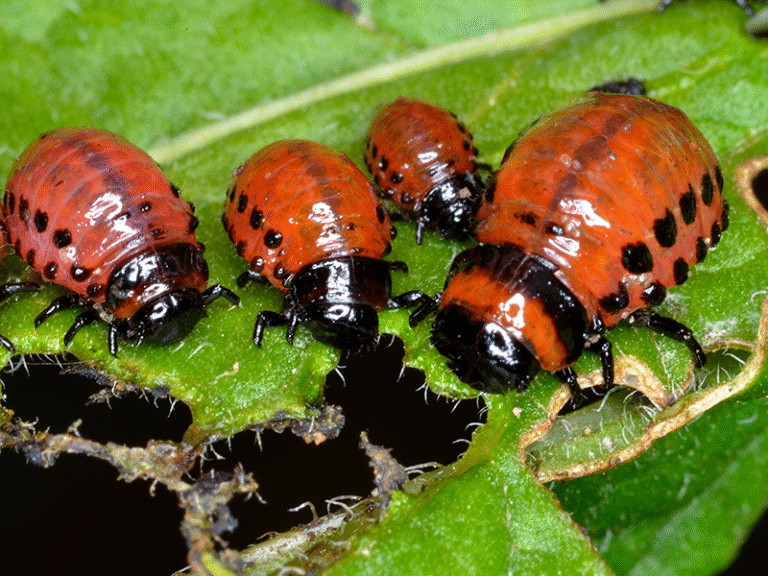Penn State Scientists Discover That Active Soil Microbes, Not Abundant Ones, Are the Real Root Colonizers

Soil is teeming with life, but only a small fraction of those microscopic residents ever make it into a plant’s roots. Scientists at Pennsylvania State University (Penn State) have taken a deep look into this hidden world and discovered that what matters most for microbes isn’t how many of them exist — it’s how active they are. Their study reveals that microbial activity near plant roots is the key factor determining whether a microbe can successfully colonize a plant from the soil.
Published recently in the journal mSystems, the research team led by Estelle Couradeau, assistant professor of soils and environmental microbiology at Penn State, used a cutting-edge technique called BONCAT to track which microbes were awake and active — and which were simply dormant passengers in the soil. The findings could have major implications for sustainable agriculture and the growing use of microbial inoculants in farming.
Understanding the Experiment
The team’s main goal was to understand what helps soil microbes successfully move from the soil into plant roots. They used crimson clover (Trifolium incarnatum), a legume that is often grown as a cover crop in the U.S. Northeast. Legumes are especially interesting because they form root nodules — small structures on their roots that house beneficial bacteria helping the plant capture nitrogen from the air.
But the challenge is that most soil microbes are dormant, meaning they’re alive but inactive, waiting for the right conditions to “wake up.” This state of dormancy makes it difficult to predict which microbes will actually interact with plants. The Penn State researchers wanted to find out: Does being active increase a microbe’s chances of entering the plant?
To answer this, they examined three distinct zones:
- Bulk soil – the general soil far from the root.
- Rhizosphere – the thin layer of soil immediately surrounding the root, influenced by plant secretions.
- Endosphere – the inner part of the root where microbes live within plant tissues.
The BONCAT Technique
At the heart of this discovery is the technique known as BONCAT, short for Bioorthogonal Non-Canonical Amino Acid Tagging. This chemical-labeling method marks only those microbes that are actively making new proteins — essentially those that are metabolically awake. BONCAT provides a snapshot of microbial activity over a specific time window, separating the active microbes from the dormant majority.
The researchers combined BONCAT with flow cytometry — a lab technique that sorts and analyzes individual cells — and 16S rRNA gene sequencing, which identifies microbial species. Together, these tools gave them a detailed picture of which microbes were active in each soil layer and whether those microbes managed to make it inside the plant.
Microscopy imaging confirmed the presence of BONCAT-labeled (active) microbes inside the plant’s tissues, verifying that the method worked as intended. This was the first time BONCAT was used to trace microbial activity along the soil-to-root-to-plant gradient, providing direct visual and genetic evidence of which microbes were alive and working at each stage.
What They Found
The results were clear and striking. Microbial activity was found to be ten times higher inside the plant (in the endosphere) than in the surrounding soil or rhizosphere. That means the microbes living inside the plant are much more metabolically active — likely because they have access to richer nutrients within plant tissues.
Even more interestingly, the microbes that were active in the rhizosphere — the soil closest to the root — were far more likely to colonize the plant than those that were abundant but dormant. This shows that activity is a better predictor than abundance when it comes to which microbes succeed in becoming plant partners.
Essentially, there may be thousands of microbes around a plant’s roots, but only the few that “wake up” and start functioning at the right time can make their way inside and establish a relationship with the plant.
The researchers noticed that only a small number of microbial families consistently managed to colonize the plant. Most microbes, even if they were abundant in the soil, remained dormant and never made it into the plant’s tissues. This suggests that dormancy exit — the process by which microbes “wake up” — might be a crucial step in root colonization. The team plans to explore in future research whether plant-produced nutrients or signals are what trigger this awakening.
Why This Matters for Agriculture
This discovery has significant implications for sustainable farming and microbial inoculant development — the use of beneficial microbes added to seeds or soil to improve crop performance. Right now, many of these microbial products fail to deliver consistent results in the field because the microbes that perform well in lab conditions often stay dormant or inactive in real soils.
With this new insight, scientists can focus on selecting microbes that become active near roots in natural soil environments, instead of just those that are easy to grow in culture. This could lead to more reliable microbial inoculants that actually colonize plants and perform beneficial functions like nutrient uptake, nitrogen fixation, or disease resistance.
In short, by paying attention to microbial activity — not just presence — researchers can design better microbial products that make agriculture more sustainable and less dependent on chemical fertilizers or pesticides.
The Bigger Picture: Microbial Life Beneath Our Feet
To appreciate the importance of this work, it helps to understand the incredible world of soil microbiology. A single teaspoon of healthy soil can contain billions of microorganisms, representing thousands of species of bacteria, fungi, and other microscopic life forms. These organisms are essential for maintaining soil health, recycling nutrients, breaking down organic matter, and supporting plant growth.
However, many of these microbes are in a state of dormancy — a kind of microbial “sleep mode” that helps them survive harsh conditions like drought, temperature changes, or nutrient shortages. Scientists estimate that over 90% of soil microbes are dormant at any given time.
What triggers microbes to become active again? One major factor is the presence of plant roots, which release organic compounds known as root exudates — sugars, amino acids, and other molecules that feed microbes and stimulate their activity. This creates a unique hotspot of biological activity known as the rhizosphere, where plants and microbes interact intensely.
The Penn State study helps clarify what happens next: only those microbes that can sense these signals and become active fast enough seem to make it into the plant’s interior. This “microbial alarm clock” — the moment when dormant microbes wake up — could be the critical determinant of whether a plant benefits from its surrounding microbial community.
Looking Ahead
While this research offers a major leap in understanding, there are still open questions. For instance, what exactly wakes dormant microbes? Are specific chemicals from the plant responsible, or is it environmental factors like moisture and pH? And once microbes enter the plant, how does the plant decide which ones to keep and which to reject?
The study focused on crimson clover, but future research may explore whether the same patterns hold true for other major crops such as wheat, rice, or maize. Understanding these relationships could pave the way for crop-specific microbial solutions — custom microbial blends that activate and thrive in the presence of a particular plant species.
The Penn State team plans to expand their work to identify which specific microbial taxa (families and genera) are most successful in different root zones, and to test whether manipulating microbial activity in soil can enhance plant growth.
The Takeaway
This study fundamentally changes how we think about soil microbes and plant interactions. It shifts the focus from who’s there to who’s active. Only those microbes that “wake up” in time — the active ones — are able to move from the soil into the root and form beneficial relationships with plants.
In an era when agriculture is seeking greener, more sustainable solutions, this research offers a roadmap for designing better microbial-based products that actually work in real-world conditions. By identifying the active players in the soil microbiome, scientists can help farmers grow healthier crops with less chemical input — and that’s a win for both agriculture and the environment.
Research Reference:
Harris, J.E., Couradeau, E.M., et al. (2025). The activity of soil microbial taxa in the rhizosphere predicts the success of root colonization. mSystems, 10(9). https://journals.asm.org/doi/10.1128/msystems.00458-25





